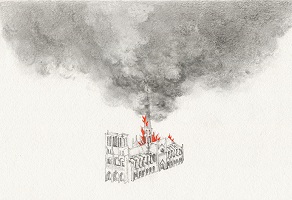Producing an Antisemitic Consensus within the Framework of the Judenjagd: The Role of Poles in the Holocaust Based on the Murder of Nachman Blumental’s Family in Wielopole Skrzyńskie during the German Occupation
Producing an Antisemitic Consensus within the Framework of the Judenjagd: The Role of Poles in the Holocaust Based on the Murder of Nachman Blumental’s Family in Wielopole Skrzyńskie during the German Occupation
Author(s): Katrin StollSubject(s): Recent History (1900 till today), WW II and following years (1940 - 1949), Fascism, Nazism and WW II, History of Antisemitism
Published by: Instytut Slawistyki Polskiej Akademii Nauk
Keywords: antisemitism; Shoah; Judenjagd; Blue Police; Dębica County; participating observers; antisemitic consensus; landscape; Jewish cemetery;
Summary/Abstract: This article – which is based on the records of Nachman Blumental that I discovered as part of my work on his archive material and that I brought to light, as well as on the documentation of two official investigations – deals with the complicity of Poles – uniformed (the policja granatowa, or Blue Police) and civilians – in the Nazi project to kill every Jew without exception in Dębica County during the German occupation. I analyze the mechanism that set in motion antisemitic violence within the framework of the Judenjagd, i.e. the Jew hunt. I argue that it was attitudes and behaviors in the environment that determined the effectiveness of the German Nazi project to persecute and murder all Jews without exception. The majority group plays the role of “second instance” (Elżbieta Janicka). By reconstructing the crime against Ariel Blumental and Maria Blumental in June 1943 in Brzeziny, Mała and Wielopole Skrzyńskie, and by deconstructing the mystification of the crime by the inhabitants, I uncover the foundations of this process and show how the mechanism of self-representation as non-involved functions. “Participating observers” (Elżbieta Janicka) mask their own participation in the murder of Nachman Blumental’s family. The task, then, is to interpret both what is said and what is not said. The crime discussed in the article is emblematic in that it sheds light on the socio-cultural framework of the Holocaust and its landscape. It shows the loneliness of those who were hiding, handed over and sentenced to death by their neighbors.
Journal: Studia Litteraria et Historica
- Issue Year: 2021
- Issue No: 10
- Page Range: 1-89
- Page Count: 89
- Language: English

